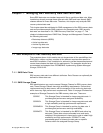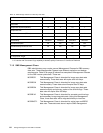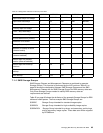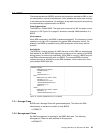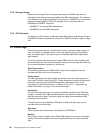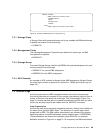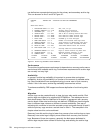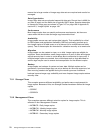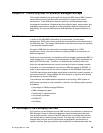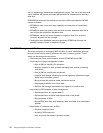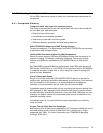
70 Storage Management with DB2 for OS/390
can define two separate device types for the primary and secondary archive log.
This can be seen on line 5 and 6 of Figure 21.
Figure 21. Archive Log Installation Panel DSNTIPA
Performance
The archive log performance requirement is dependent on recovery performance,
service level, and available active log. Performance requirements for archive logs
are normally not very high.
Availability
In general, archive log availability is important to ensure data and system
availability. Archive log availability is a function of the amount of available active
log. Some installations have enough active log to cover most of their recovery
needs. If this is the case, archive log availabilty becomes less critical.
To enhance availability, DB2 supports software duplication of archive log data
sets.
Migration
Archive logs can be created directly to tape, but may also reside on disk. Disk
archive logs are eligible to be migrated by DFSMShsm. The residence time on
disk should ensure that the likelihood of a recall is in agreement with recovery
service levels. When dual archive logs are defined, DFSMShsm should migrate
them to different tape volumes or devices to ensure availability. One way of
achieving this, would be to have the secondary copy to migrate directly to level 2,
while the primary copy remains a certain time on level 1. The examples in this
chapter show how this can be achieved.
Recovery from disk archive logs is faster than recovery from archive logs on tape.
Recovery from active logs is slightly more efficient than recovery from archive
logs. Because of these two reasons, generally the disk space dedicated to
archive logs may be better utilized for active logs and sending the archive logs
DSNTIPA INSTALL DB2 - ARCHIVE LOG DATA SET PARAMETERS
===>
Enter data below:
1 ALLOCATION UNITS ===> CYL Blk, Trk, or Cyl
2 PRIMARY QUANTITY ===> 3320 Primary space allocation
3 SECONDARY QTY. ===> 0 Secondary space allocation
4 CATALOG DATA ===> YES YES or NO to catalog archive data sets
5 DEVICE TYPE 1 ===> DASD Unit name for COPY1 archive logs
6 DEVICE TYPE 2 ===> DASD Unit name for COPY2 archive logs
7 BLOCK SIZE ===> 28672 Rounded up to 4096 multiple
8 READ TAPE UNITS ===> 2 Number of allocated read tape units
9 DEALLOC PERIOD ===> 0 Time interval to deallocate tape units
10 RECORDING MAX ===> 1000 Number of data sets recorded in BSDS
11 WRITE TO OPER ===> YES Issue WTOR before mount for archive
12 WTOR ROUTE CODE ===> 1,3,4
Routing codes for archive WTORs
13 RETENTION PERIOD ===> 365 Days to retain archive log data sets
14 QUIESCE PERIOD ===> 5 Maximum quiesce interval (1-999)
15 COMPACT DATA ===> NO YES or NO for data compaction
F1=HELP F2=SPLIT F3=END F4=RETURN F5=RFIND F6=RCHANGE
F7=UP F8=DOWN F9=SWAP F10=LEFT F11=RIGHT F12=RETRIEVE




